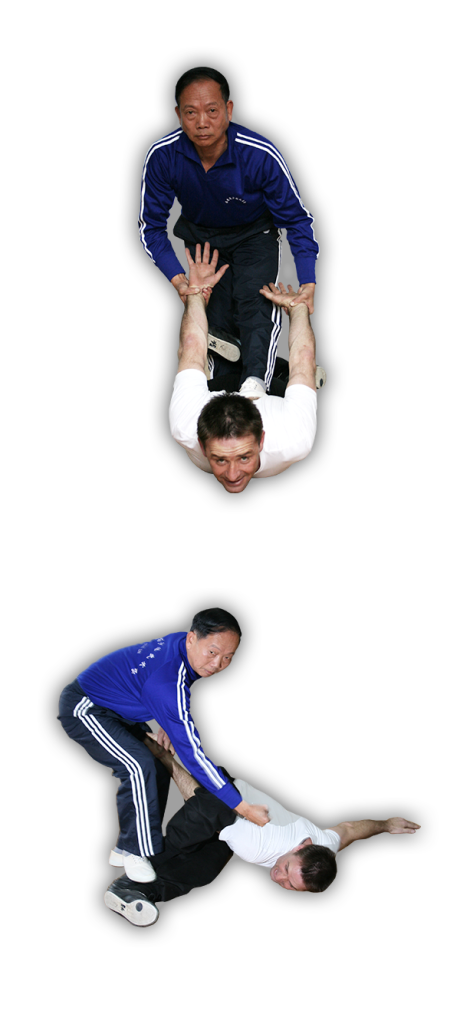Dog boxing kung fu
DiShu Quan (Dog Boxing Style of kung fu)
A general class of dog boxing will consist of the following:
Half an hour minimum of stretches to the whole body, both seated and standing.
This will:
- Enable the practitioner to bind their opponents more fluidly.
- Stop the practitioner from getting injured.
- Increase the ability to get out of the binding techniques.
- Improve the students’ posture and relax the whole body.
After the stretching, a series of leg lifting and squatting is done to tighten and strengthen the tendons, ligaments and muscles to keep them strong and supple for this demanding style of kung fu.
Next is DiShu foot work; i.e. different stepping and two person timing exercises, to engage in and out of fighting range.
This is followed by a series of rolling, diving and coiling into or around the opponent. This is practiced to ensure that the practitioner can move freely on the floor and be ready to start the next step of binding each other in more ways than you can imagine.
There are so many ways that all leave the opponent defenceless and unable to move, never mind retaliate.
There is also time to practice the DiShu patterns, these patterns teach the movements of the style and strengthen the body to move with ease.
Each class is different but works on the foundation of the system and always involves working in partnership with the other students to apply the movements.
You do not have to be flexible or fit to start DiShu as practicing will get you better at both, but you will require a strong mind. The saying in China is “The hardship of dog boxing”. This is a fighting art on the ground with no mats and is often practiced on concrete or in summer on the grass.
I absolutely love it, and feel invigorated at the end of a session.
Head Instructor Neil Johnson

